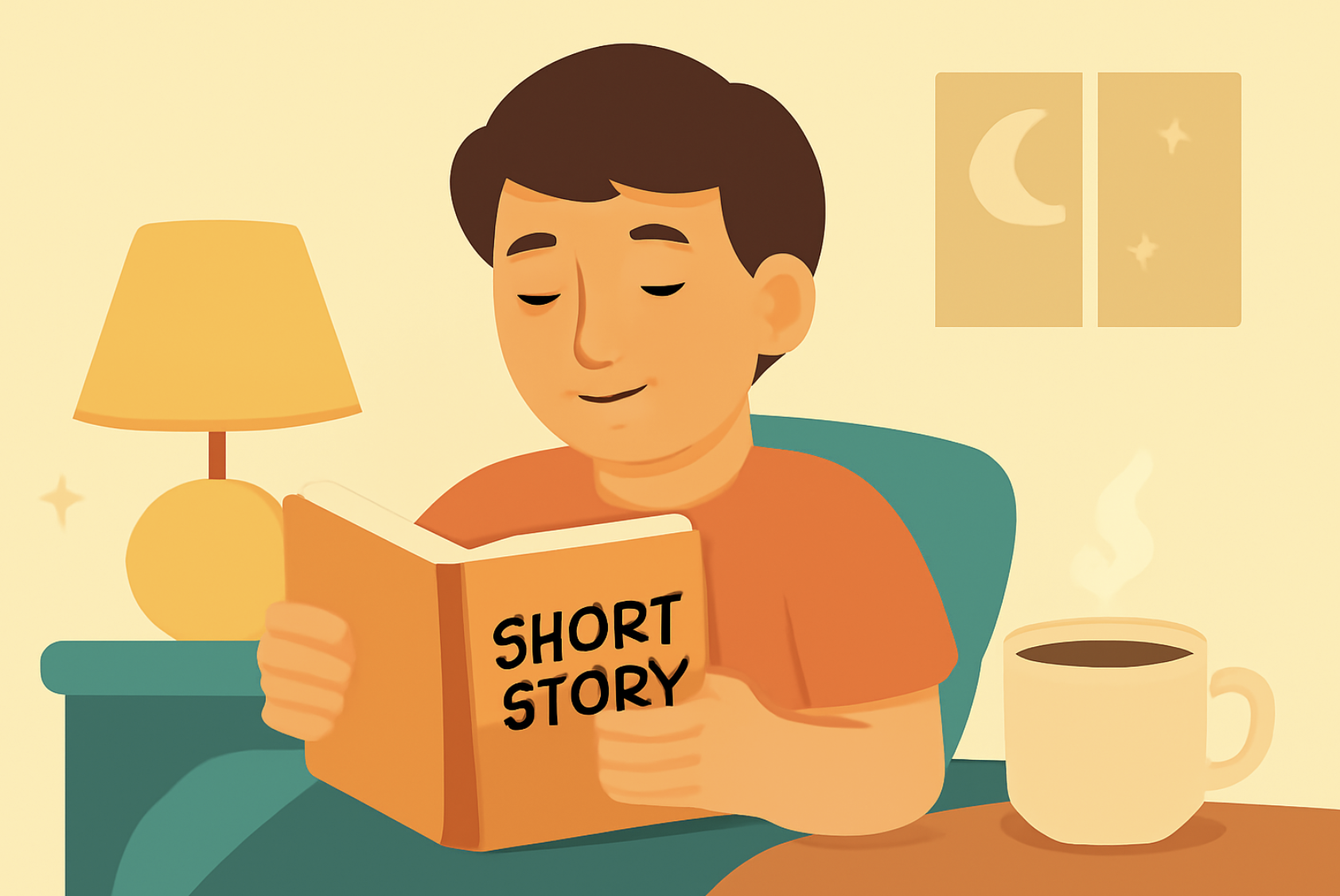You’ve got an idea, a notebook (or twelve), and maybe a half-finished cup of coffee. Now comes the part every writer both dreads and dreams about: the first draft.
Let’s be real—writing a first draft can feel like herding cats with a pen. It’s messy, unpredictable, and often full of plot holes, character name changes, and internal monologues that may or may not make the final cut. But here’s the truth: it doesn’t have to be perfect. It just has to exist.
The first draft is where your ideas start taking shape and helps create a well-structured book. It’s less about getting the words right and more about getting the words out. Think of it as the foundation—rough, unpolished, but full of potential. And if you’d rather focus on shaping the vision while someone else handles the actual writing, ghostwriting services can be an excellent option to keep your momentum going.
Ready to get started? Let’s break the blank page and make progress—one slightly chaotic, wonderfully imperfect word at a time.
Tip 1: Defining the Purpose of Draft Writing
Your first draft isn’t meant to be perfect—it’s meant to exist. This is the raw, unfiltered version of your writing, where ideas take shape for the first time. It’s all about exploration, not execution.
One of the most successful authors, Stephen King famously said to “write with the door closed,” encouraging writers to focus on getting the story out without worrying about polish. James Clear reminds us that consistency beats perfection—the first draft simply transforms a blank page into something you can work with.
So throw your ideas onto the page, see what sticks, and have fun with it. The real magic happens in revision—but first, you’ve got to start.
Key Takeaway: The goal of the first draft is progress, not perfection—just get the words down and worry about polishing later.
Tip 2: Embrace Terrible First Drafts
Let’s get one thing straight: your first draft is supposed to be bad. Anne Lamott, in her iconic advice to writers, calls it the “terrible first draft” for a reason—because it frees you from the pressure of perfection and lets you focus on getting the story out of your head and onto the page.
This messy, unfiltered version of your writing is where creativity has room to run wild. It’s not about clean sentences or flawless structure—it’s about exploration. Think of it as the sandbox stage, where you test ideas, follow unexpected turns, and give yourself permission to not know all the answers yet.
The beauty of the terrible first draft is that it gives you something to work with. You can’t revise a blank page, but you can shape chaos into something powerful. So embrace the mess. It’s the first sign you’re doing it right.
Key Takeaway: Your first draft doesn’t need to be good—it just needs to exist. Progress comes from letting go of perfection.
Tip 3: Set the Stage for Writing
Your writing environment matters more than you think. A cluttered, noisy, or distracting space can stall your progress before you’ve even typed a word. The goal is to create a space—physical and mental—that invites focus and flow.
This could mean choosing a quiet spot, putting on noise-canceling headphones, or lighting a candle that tells your brain, “We’re writing now.” Even small rituals—like making a cup of tea or reviewing your notes—can help ease you into the right mindset. The more you treat writing like a habit, the easier it becomes to start (and keep going).
Key Takeaway: Set yourself up for success by creating a space and a writing routine that helps you focus and makes writing feel like something you want to do—not just something on your to-do list.
Tip 4: Develop a Loose Plan or Outline
You don’t need a 50-page outline to get started—but a little structure goes a long way. Whether it’s a rough list of scenes, a few bullet points, or a scribbled flow of ideas, a loose plan gives your writing direction without boxing you in.
Think of it as a GPS with a flexible route: you know where you’re headed, but you’re free to take creative detours along the way. It helps prevent the dreaded “now what?” moment and keeps your momentum going when inspiration wobbles.
Key Takeaway: A simple outline can keep your draft on track—just enough structure to guide you, but flexible enough to evolve as your story unfolds.
Tip 5: Define a Clear Thesis Statement And Main Ideas
If you’re writing nonfiction—like an essay, article, or research piece—a clear thesis statement is your best friend. It should sum up the central argument or purpose of your work in one strong sentence. Think of it as your writing compass: every paragraph should point back to it.
For fiction writers, while you might not need a formal thesis, it’s still important to know your story’s main idea or theme. What’s it really about beneath the plot? Defining this early gives your draft direction, helps you stay focused, and keeps your tone and message consistent.
Whether you’re exploring an argument or telling a story, knowing where you’re going makes it much easier to figure out how to get there.
Key Takeaway: A strong thesis or central idea brings clarity and purpose to your draft—keeping your writing focused, coherent, and meaningful from start to finish.
Tip 6: Find Your Flow – And Keep It Going
Let’s face it: the blank page can be intimidating. The good news? You don’t have to fill it perfectly—you just have to fill it. One great way to get started is through free writing: set a timer and write nonstop without editing or second-guessing. It’s a low-pressure way to shake off hesitation and get words moving. If you’re struggling with writer’s block, read our guide on how to combat writer’s block for more aid!
Another helpful strategy is setting small, manageable goals—think “200 words” instead of “finish chapter one.” These bite-sized wins help you stay consistent without getting overwhelmed. And if you’re stuck? Use a writing prompt, image, or even a random sentence to spark momentum.
Key Takeaway: Don’t wait for inspiration—build momentum with simple strategies like free writing, word count goals, and prompts to keep your draft moving forward.
Tip 7: Steal Focus Tricks from the Pros
Every writer has their quirks—and sometimes, those quirks are the secret to staying focused. Dan Brown famously hangs upside down (yes, really) to reset his brain and beat writer’s block. While you don’t need to go full Cirque du Soleil, the takeaway is this: find what helps you focus.
It might be a five-minute walk, lo-fi beats in the background, or switching locations. Even planning your scenes ahead, as Brown does, can keep you grounded when your brain starts wandering. The trick is to notice what keeps you in the zone—and build it into your routine.
Key Takeaway: Focus isn’t one-size-fits-all—experiment with routines, habits, and tools until you find what keeps you coming back to the page.
Tip 8: Stay Motivated and Guard Your Focus
Motivation is easy at the beginning—harder when the novelty wears off. That’s why it helps to reconnect regularly with your why. Whether it’s finishing your first book, sharing a story that matters, or proving something to yourself, keeping that purpose in sight makes a big difference. A sticky note with your goal or a favorite quote on your desk? Small, powerful fuel.
To stay productive, try time management strategies like the Pomodoro Technique—25 minutes of focused writing, followed by short breaks. It helps you stay sharp and avoid burnout. Distraction management matters too: declutter your space, silence notifications, and let others know when you’re in “writing mode.”
Key Takeaway: Staying motivated isn’t just about willpower—it’s about reconnecting with your purpose, managing distractions, and building habits that support your writing rhythm.
Tip 9: Turn Sparks Into Substance
Every great piece of writing starts with a spark—but turning that spark into a structured story ouline takes a bit of strategy. Brainstorming methods like mind mapping and listing can help you organize and expand your ideas. Mind maps are great for visual thinkers who want to see connections, while lists allow for a free-flowing brain dump without judgment.
Another effective approach? Ask questions. The simple act of asking “what if?” or “why does this matter?” can unlock deeper layers of meaning and direction. Don’t forget to look outward too—books, movies, conversations, and even daydreaming can be fuel for fresh ideas.
Key Takeaway: Use tools like mind maps, lists, and curiosity-driven questions to turn scattered thoughts into focused, creative direction.
Tip 10: Do the Research – But Don’t Let It Take Over
Whether you’re writing a memoir or a murder mystery, research adds richness to your draft. For nonfiction, it strengthens your arguments with facts and stats. For fiction, it grounds your story in believable detail—whether it’s 19th-century London or the layout of a spacecraft.
The trick is to use research as seasoning, not the whole meal. Let it support your ideas, not overshadow them. A well-researched detail should feel invisible to the reader—natural, not forced.
Key Takeaway: Good research adds depth and credibility—just make sure it enhances your draft, not distracts from it.
Tip 11: Let Structure Be Your Writing GPS
Structure gives your draft shape—it’s the roadmap that keeps your ideas from wandering off course. In nonfiction, that might look like a classic intro-body-conclusion layout. In fiction, it’s the backbone of your plot: exposition, rising action, climax, resolution.
Knowing the common structures of your genre can make the writing process smoother and more intentional. But remember: structure isn’t a cage—it’s a guide. Leave room for flexibility and follow unexpected turns if they lead somewhere interesting. Some of your best writing may come from detours.
Key Takeaway: Structure keeps your writing focused and coherent—just don’t be afraid to bend the rules when creativity calls.
Wrapping It Up: Your First Draft Is Just the Beginning
Writing your first draft isn’t about perfection—it’s about progress. From setting the stage and finding your flow to embracing imperfection and leaning on structure, every step moves you closer to something real.
Your first draft is where your story begins to take shape. It might be messy, scattered, or full of surprises—and that’s exactly what makes it valuable. Stay curious, stay committed, and most importantly, keep writing.
Remember: Every great book started as a rough draft. Yours could be next.
Your Publishing Journey Awaits – Start NowFAQs – First Draft Writing
Q1: What is the first step in writing a draft?
The first step is simply starting—putting words on the page without overthinking them. Begin with a loose plan, outline, or even just a working title to give yourself direction. Your goal isn’t perfection but momentum, so allow yourself to write freely and explore ideas. The first step is about committing to the process, not judging the product.
Q2: What does a first draft include?
A first draft includes your raw ideas, loosely organized into scenes, arguments, or chapters depending on the format. It’s where you explore characters, develop structure, or lay out research-backed points. Expect inconsistencies, gaps, and rough phrasing—it’s all part of the process. What matters most is that your core message or story starts taking shape.
Q3: How messy is a first draft?
Very messy—and that’s perfectly normal. First drafts are meant to be unpolished, filled with plot holes, unclear phrasing, or ideas that might change entirely in revision. The focus isn’t on clean writing but on getting the full picture onto the page. Think of it as sculpting clay—you can’t shape what doesn’t exist yet.
Q4: How long should it take to write a first draft?
There’s no one-size-fits-all answer—it depends on your goals, genre, and available time. Some authors finish a first draft in a few weeks; others take several months. The key is consistency: writing regularly, even in small bursts, adds up quickly. Setting realistic deadlines helps you stay motivated without burning out.
Q5: What are the five basic elements of a first draft?
A strong first draft often includes a clear idea or theme, a basic structure, key points or plot elements, character or argument development, and supporting detail. These elements don’t have to be perfect—they just need to exist in some form. You’ll refine them later during revisions. The point of a first draft is to get everything down so you have something solid to build on.
Q6: Why is it so hard to write a first draft?
Writing a first draft is hard because it forces you to face the blank page—and your inner critic. It’s the phase where self-doubt and perfectionism can creep in, especially if you expect your words to come out polished. The solution is to lower the stakes and treat your draft as discovery, not performance. Writing becomes easier when you give yourself permission to be imperfect.
Q7: What should you not worry about in your first draft?
Don’t worry about grammar, spelling, perfect transitions, or elegant phrasing. Don’t obsess over whether your plot or argument makes complete sense yet. The first draft is for exploration and momentum, not polish. Save the fine-tuning for later revisions—right now, your only job is to write.








